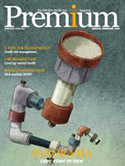Swiss Re partners with Climeworks

Swiss Re and carbon dioxide air capture technology firm Climeworks recently partnered to sign the world’s first long-term purchase agreement for direct air capture and storage of carbon dioxide, worth USD10 million over 10 years.
Both the length of the term of ten years and the total value of USD 10 million are so far unmatched in the voluntary market for this type of high-quality carbon removal, sending an important demand signal to developers, investors and other buyers. The companies also agreed to collaborate on developing risk management knowledge and risk transfer solutions, as well as to explore future investment and project finance opportunities.
”To mitigate the risks of climate change, the world needs to scale-up carbon removal on top of, not instead of emission reductions. By partnering with Climeworks we can play to our strengths in this endeavour, as a risk taker, investor, and forward-looking buyer of climate solutions”, said Christian Mumenthaler, Swiss Re’s Group chief executive officer and co-chair of the World Economic Forum’s Alliance of CEO Climate Leaders.
The technological carbon removal solution offered by Climeworks in Iceland filters carbon dioxide (CO2) from ambient air using geothermal energy. The captured CO2 is then sent for permanent storage in nearby rock layers. It is dissolved in water and pumped deep underground, where it reacts naturally with the surrounding basalt rock to form stable carbonate minerals – the CO2 literally turns into stone. This is considered the safest, most durable form of all carbon removal solutions that are commercially available today.
Christoph Gebald, co-CEO and co-founder of Climeworks, said: “We are very proud to have established the basis for a unique long-term partnership with the leading risk knowledge company Swiss Re. This is a decisive milestone for the scale-up of Climeworks and the direct air capture industry.”
Carbon removal projects can use nature-based solutions like afforestation, which comes with many co-benefits, such as improved biodiversity. They are, however, limited by other types of land use and are vulnerable to the re-release of the stored carbon, eg through wildfires. This is why technological carbon removal solutions like direct air capture and storage are necessary to limit global warming over the long run.
Bringing climate solutions to scale not only requires the right demand signals, but also de-risking and financing. The insurance sector is uniquely positioned to offer support on all three fronts: through long-term purchase agreements, providing insurance capacity for evolving risk pools, and investments in new asset classes, as described in the recent Swiss Re Institute report on the insurance rationale for carbon removal solutions.





































